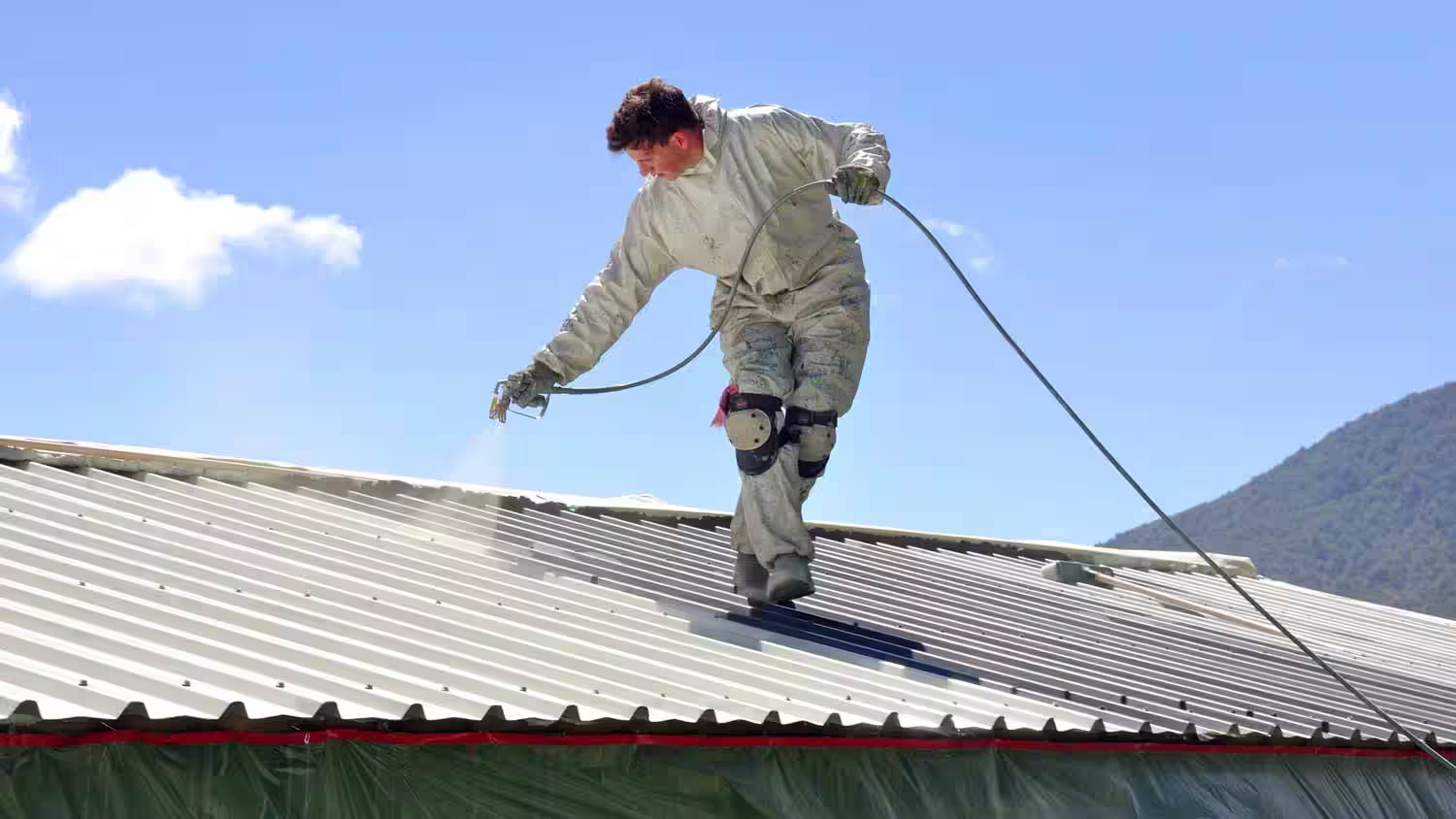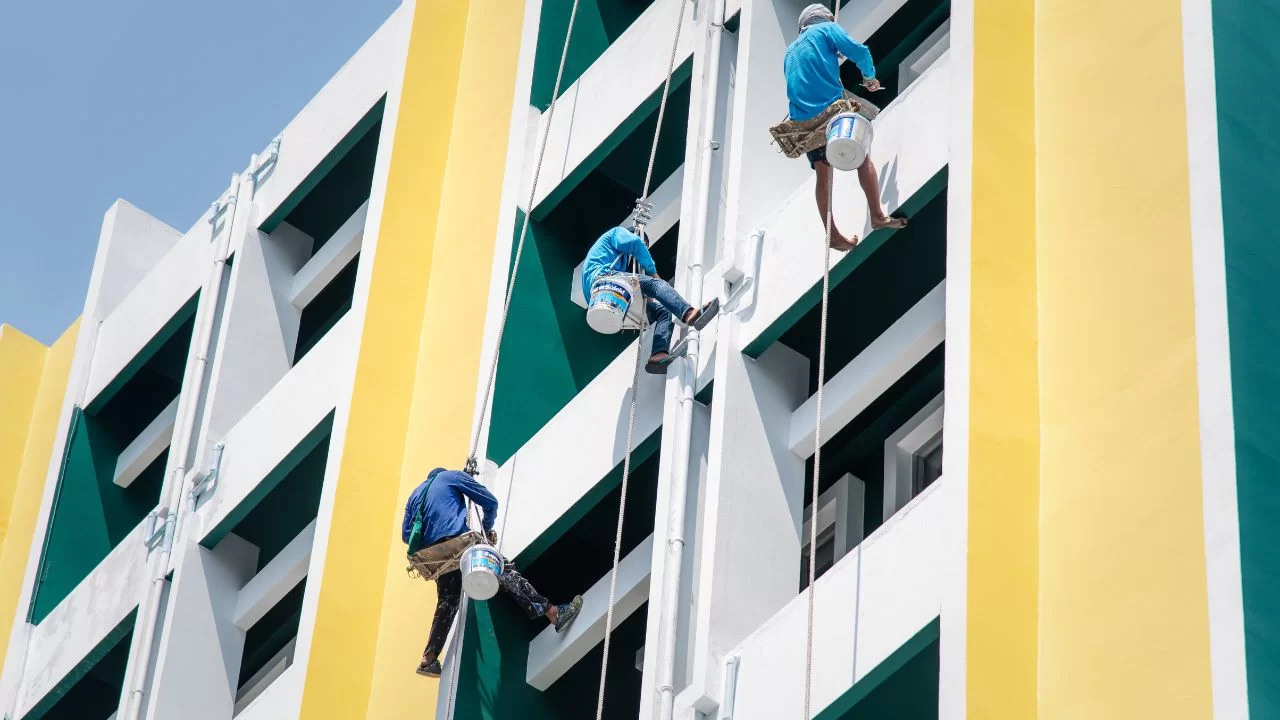
When it comes to painting your high rise building, choosing the right high-rise painting finish is crucial for achieving a long-lasting, beautiful result. The exterior of your high rise is exposed to various weather conditions and environmental factors, making it essential to select a finish that can withstand these challenges. In this blog post, we’ll explore the different finishes available for your high rise painting project, providing detailed pros and cons for each option to help building owners and managers make an informed decision.
What is high-rise painting?
High rise painting refers to the process of painting the exterior or interior of tall buildings, typically those with multiple stories. These buildings can include apartment complexes, office towers, hotels, and other commercial or residential structures. High rise painting projects require specialized equipment, safety measures, and expertise to address the unique challenges posed by working at significant heights.
High rise painting contractors are professionals who specialize in painting these tall structures. They have the knowledge, skills, and equipment necessary to safely and efficiently complete high rise painting projects while ensuring high-quality results and minimal disruption to the building’s occupants.
How do you paint a high-rise building?
Painting a high-rise building is a complex process that requires careful planning, preparation, and execution. Here are the general steps involved in painting a high-rise building:
- Safety preparation: Before beginning the project, high rise painting contractors must develop a comprehensive safety plan, which includes the use of appropriate safety equipment, such as harnesses, lanyards, and anchors. They must also ensure that all workers are properly trained in safety procedures and fall protection.
- Access equipment: High rise painting contractors use various types of access equipment to reach the exterior surfaces of the building. This may include scaffolding, swing stages, bosun’s chairs, or rope access systems. The choice of equipment depends on the building’s height, design, and accessibility.
- Surface preparation: Proper surface preparation is crucial for ensuring the longevity and durability of the new paint job. This may involve cleaning the surface to remove dirt, grime, and loose paint, as well as repairing any cracks, holes, or other imperfections. In some cases, the surface may need to be sanded or primed to ensure proper paint adhesion.
- Paint application: Once the surface is prepared, high rise painting contractors begin applying the chosen finish using sprayers, rollers, or brushes, depending on the surface and the type of coating being used. They may apply multiple coats to achieve the desired coverage and protection.
- Quality control: Throughout the painting process, high rise painting contractors perform regular quality control checks to ensure that the finish is being applied evenly and consistently, and that there are no defects or imperfections.
- Clean-up and final inspection: After completing the paint application, the contractors clean up the work site, remove any access equipment, and conduct a final inspection to ensure that the project meets the required standards and specifications.
Painting a high-rise building is a significant undertaking that requires the expertise of experienced high rise painting contractors. By following proper safety protocols, using appropriate equipment and techniques, and paying close attention to detail, these professionals can deliver beautiful, long-lasting results that protect and enhance the appearance of the building.
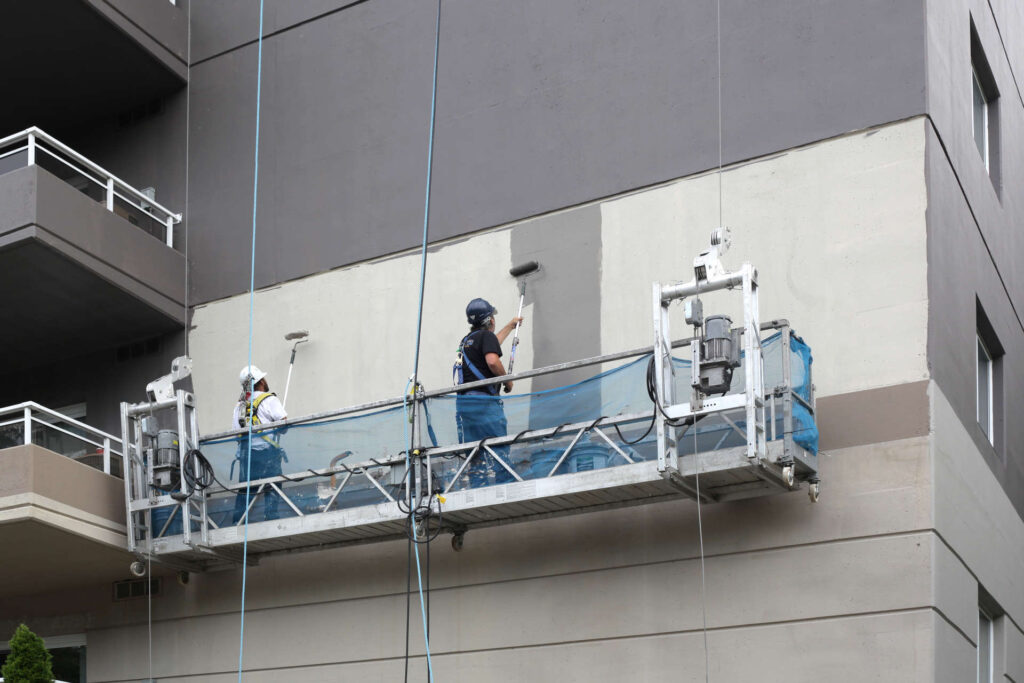
What Are The Types of Finishes for High-Rise Painting Projects?
When selecting a finish for your high-rise painting project, it’s essential to consider the unique challenges and requirements of your building. Three popular types of finishes for high-rise painting projects are elastomeric coatings, silicone-based coatings, and fluoropolymer coatings. Each of these finishes offers distinct advantages and disadvantages, making it crucial for building owners and managers to understand their properties and suitability for their specific project.
Elastomeric Coatings
Pros of Elastomeric Coatings:
- Durability: Elastomeric coatings are highly durable and can last up to 10 years or more when applied by a skilled high rise painting contractor.
- Flexibility: These coatings are designed to expand and contract with the building’s movement, preventing cracks and peeling.
- Waterproofing: Elastomeric coatings provide excellent waterproofing properties, protecting your high rise from moisture damage.
- Breathability: Despite their waterproofing properties, elastomeric coatings allow the building to breathe, preventing moisture buildup within the walls.
- Cost-effective: Compared to other high-performance coatings, elastomeric coatings are relatively cost-effective, offering excellent value for the investment.
Cons of Elastomeric Coatings:
- Thick application: Elastomeric coatings require a thick application, which can be more time-consuming and labor-intensive than other finishes.
- Longer drying time: Due to their thickness, elastomeric coatings may take longer to dry and cure compared to other options.
- Limited color options: Elastomeric coatings may have fewer color options compared to other finishes, which could be a consideration for building owners looking for specific color schemes.
When To Choose Elastomeric Coatings:
- Buildings in areas with high moisture or humidity
- Structures with existing cracks or minor surface imperfections
- Projects with a limited budget that still require a durable, long-lasting finish
Silicone-Based Coatings
Pros of Silicone-Based Coatings:
- UV resistance: Silicone-based coatings offer superior UV resistance, helping to prevent fading and chalking caused by sun exposure.
- Water resistance: These coatings provide excellent water resistance, protecting your high rise from moisture damage.
- Energy efficiency: Silicone-based coatings can help reduce energy costs by reflecting heat away from the building, keeping the interior cooler during hot weather.
- Durability: When applied by an experienced high rise painting contractor, silicone-based coatings can provide a durable, long-lasting finish.
- Versatility: Silicone-based coatings can be applied to various substrates, including concrete, masonry, and metal surfaces.
Cons of Silicone-Based Coatings:
- Higher cost: Silicone-based coatings are generally more expensive than elastomeric coatings, which may be a consideration for budget-conscious projects.
- Requires skilled application: Proper application of silicone-based coatings requires a high level of skill and experience to ensure optimal performance and durability.
- Potential for overspray: During application, silicone-based coatings may be prone to overspray, requiring careful masking and protection of surrounding areas.
When to choose silicone-based coatings:
- Buildings in areas with high UV exposure or extreme temperatures
- Projects that prioritize energy efficiency and reducing cooling costs
- High-end projects with a larger budget and a focus on long-term durability
Fluoropolymer Coatings
Pros of Fluoropolymer Coatings:
- Exceptional durability: Fluoropolymer coatings are known for their outstanding durability, with some systems lasting up to 20 years or more when applied by a reputable high rise painting contractor.
- Color retention: These coatings offer excellent color retention, resisting fading, chalking, and chemical damage.
- Gloss retention: Fluoropolymer coatings maintain their glossy appearance over time, keeping your high-rise looking fresh and attractive for years to come.
- Chemical resistance: These coatings provide superior resistance to chemicals, pollutants, and environmental contaminants.
- Easy maintenance: Fluoropolymer coatings are relatively easy to clean and maintain, requiring minimal upkeep to preserve their appearance and performance.
Cons of Fluoropolymer Coatings:
- High cost: Fluoropolymer coatings are the most expensive option among the three finishes discussed, which may not be feasible for projects with tight budgets.
- Complex application: Applying fluoropolymer coatings requires specialized equipment and expertise, making it crucial to choose a highly experienced high rise painting contractor.
- Limited substrate compatibility: Fluoropolymer coatings are primarily designed for metal surfaces and may not be suitable for other substrates like concrete or masonry.
When to choose fluoropolymer coatings:
- High-end, premium projects with a substantial budget
- Buildings in areas with high levels of chemical pollutants or environmental contaminants
- Projects that demand the highest level of durability, color retention, and gloss retention
- Metal high rise structures, such as curtain walls or architectural features
Choosing the right finish for your high rise painting project is a critical decision that requires careful consideration of your building’s unique needs, environmental factors, and budget. By understanding the pros and cons of each high rise painting finish and consulting with a reputable high rise painting contractor, building owners and managers can make an informed choice that will protect and beautify their high rise for years to come.

Get a Free On-Site Estimate For Your High-Rise Painting Project
Tags:
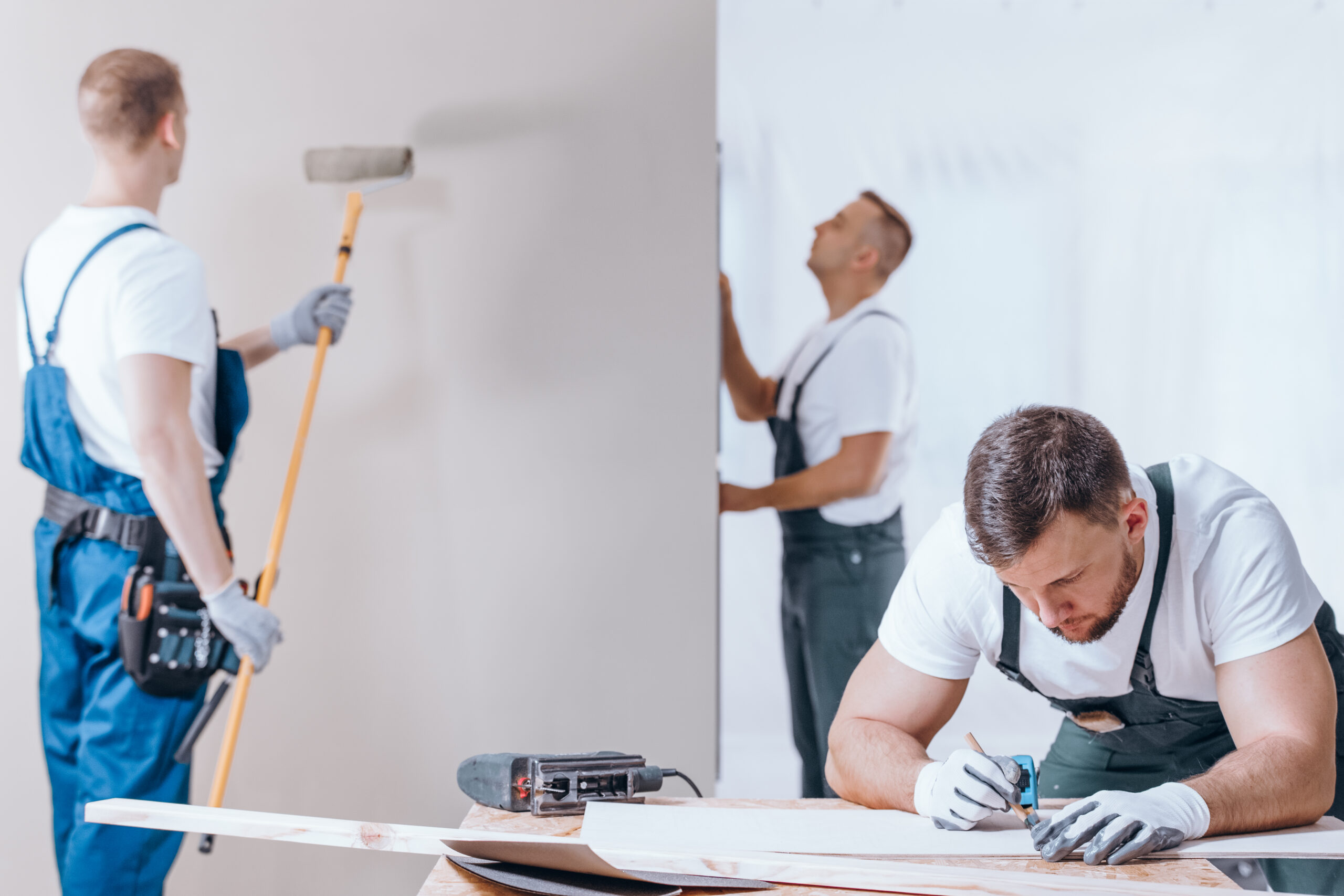
Don’t Let These 7 Blunders Ruin Your Office’s Fresh Coat: Steer Clear of Common Interior Painting Service Pitfalls
More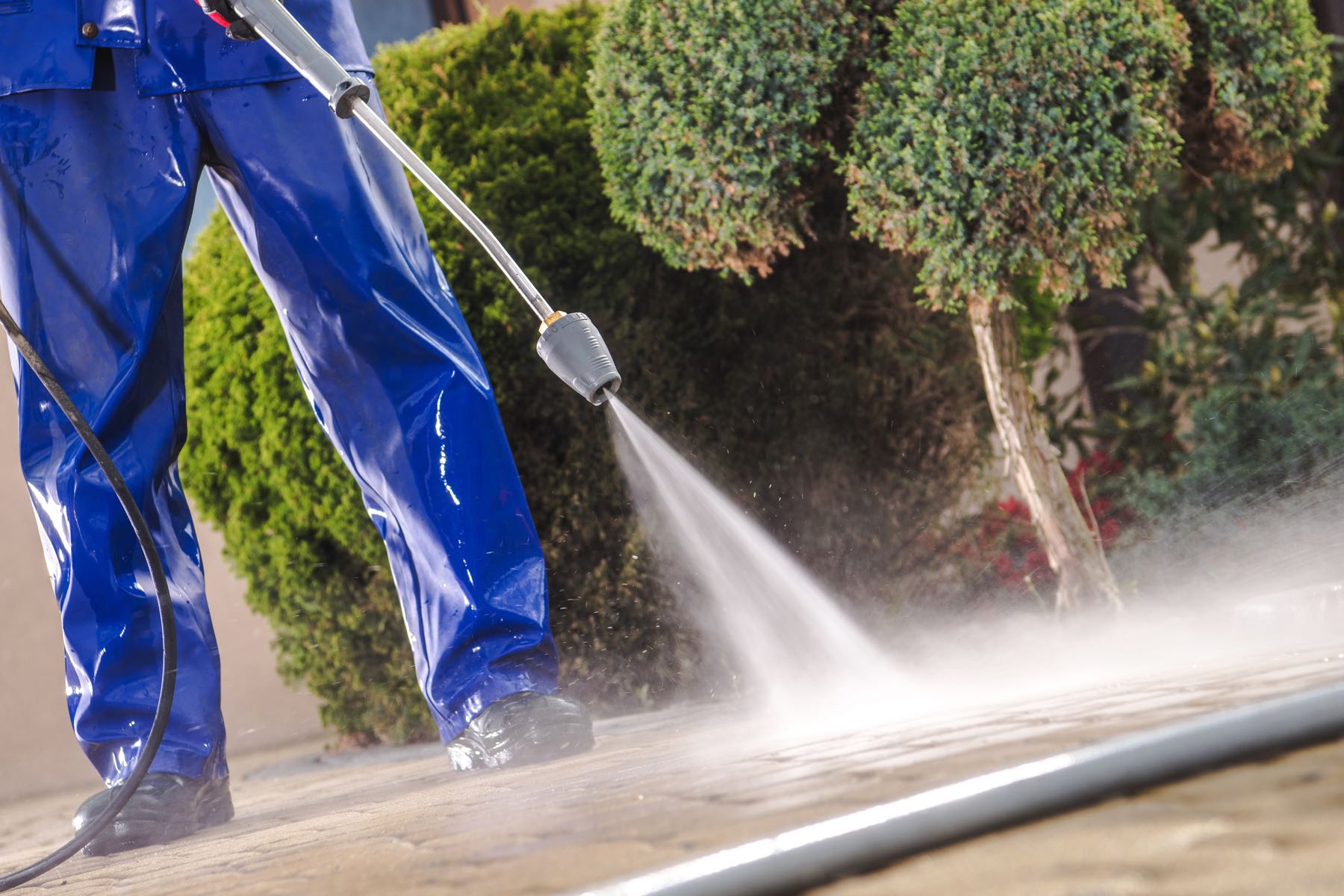
Blast Away Confusion: Unraveling the Power of Abrasive Washing vs. Pressure Washing
More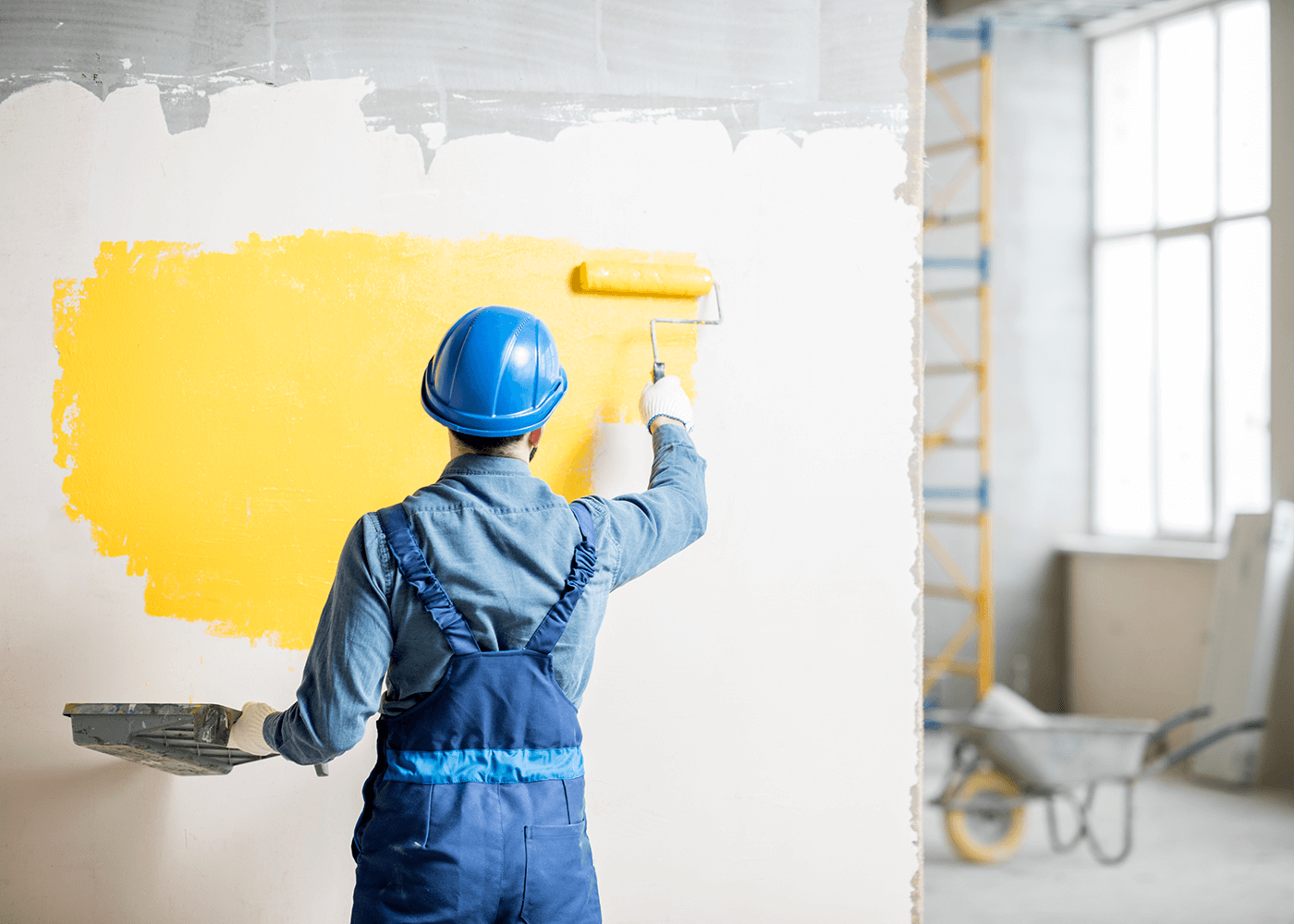
How Long Does a Commercial Painting Project Take?
More
A Comprehensive Guide to Selecting the Right Commercial Paint for Your Business
More